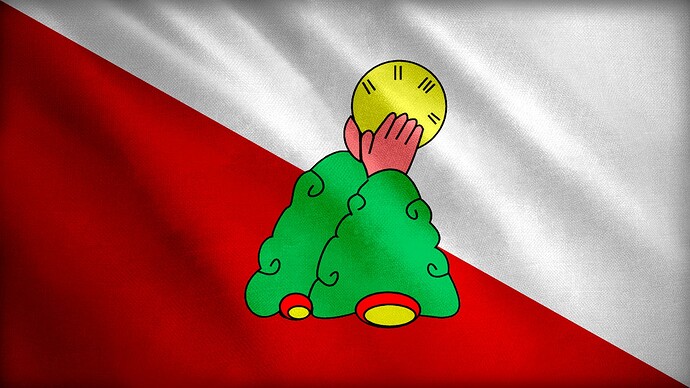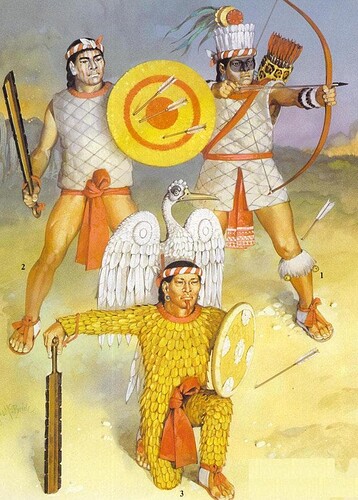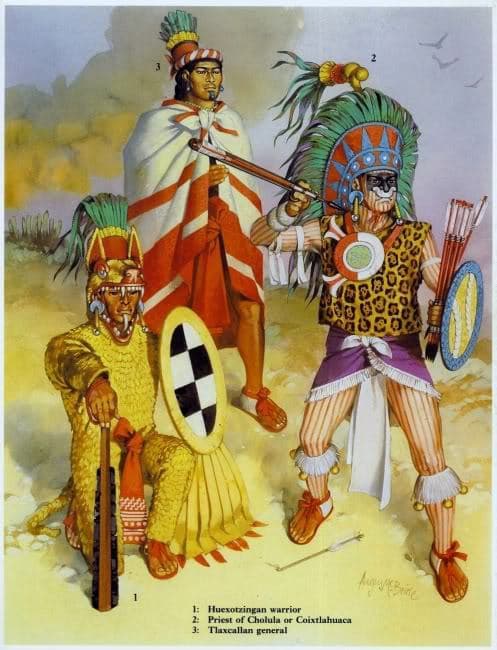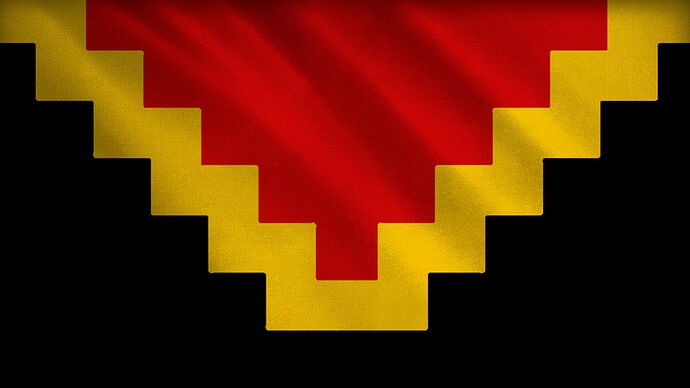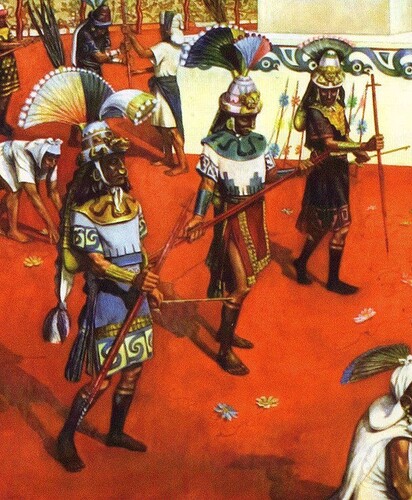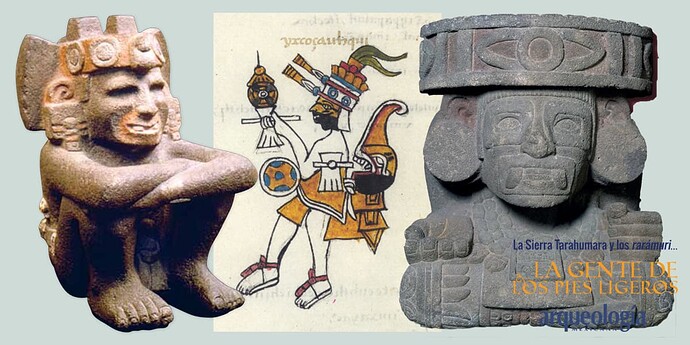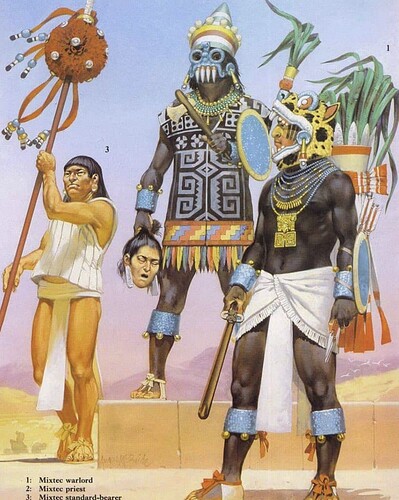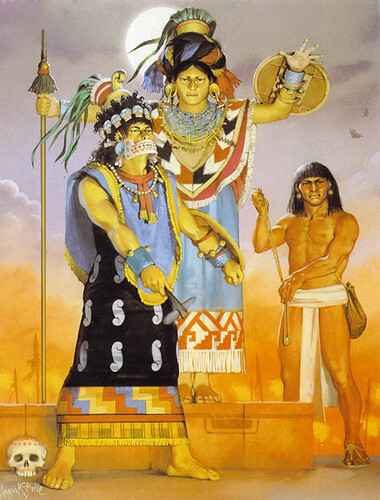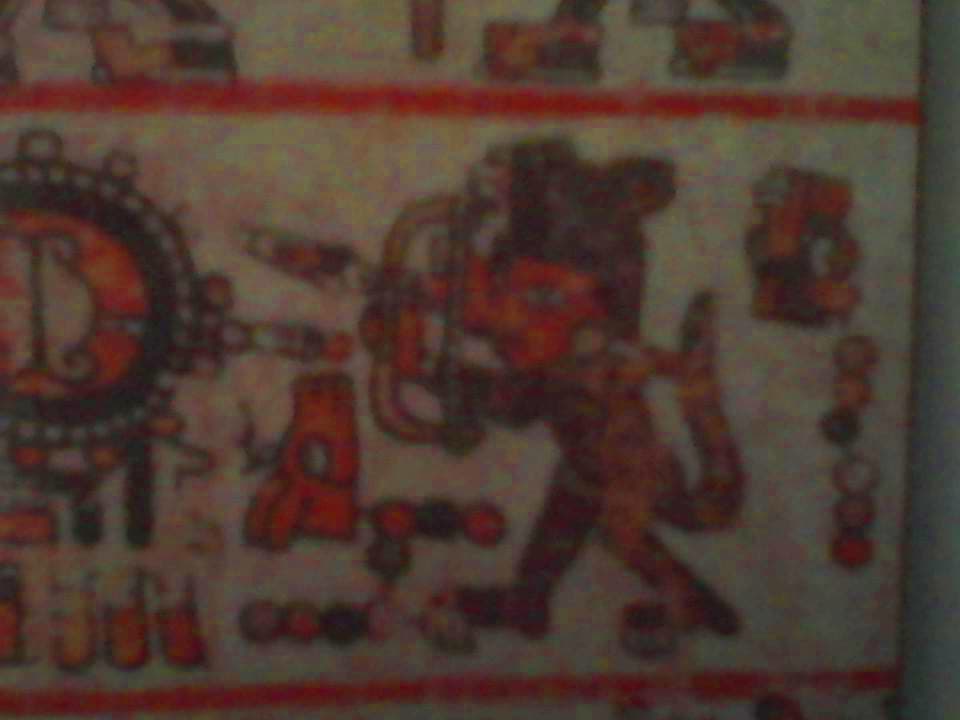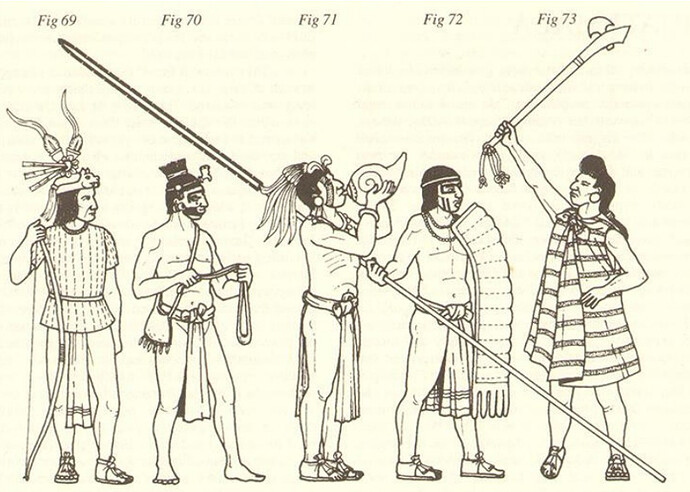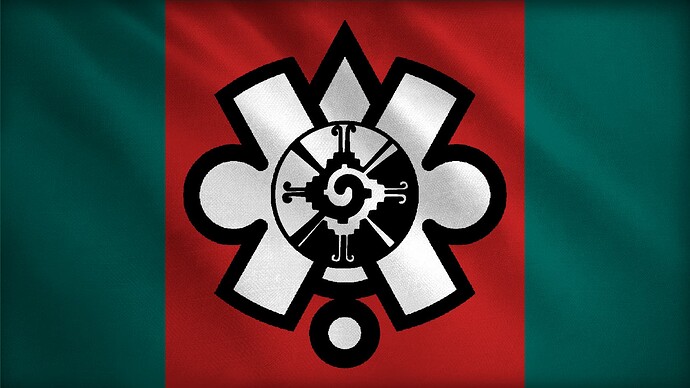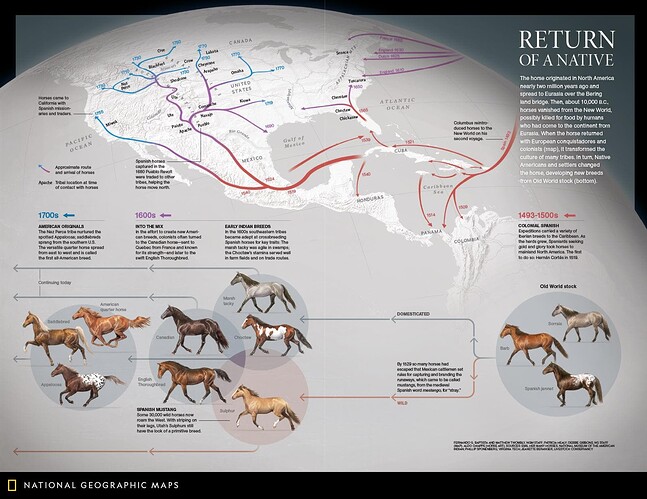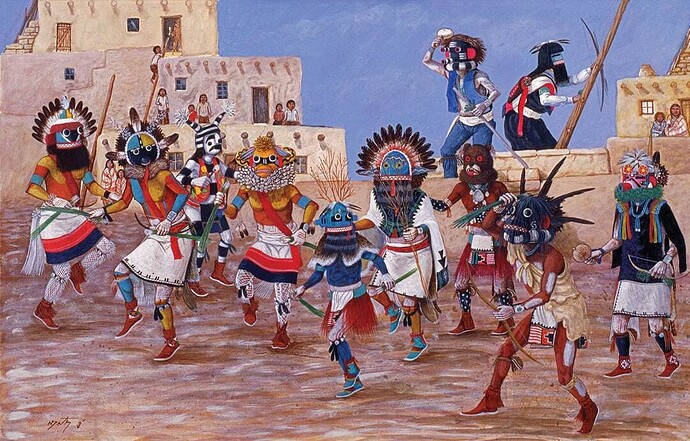In this post converge some civilizations that I would honestly only expect to see in mods, but that could precisely have a participation in the game without problems, which if it doesn’t happen is because they are overshadowed by other peoples.
The information in this post does not aspire to present complete civilizations, only to show ideas of what they could be. This is more a love letter to the cultures of my country (and one of the south) so is more for curious people.
AMERICAN CIVS UNITS
This aren´t unique units, but only are shared with other civs like Mexicas, Mayans, Incas or Purepechas.
- Slinger: Fast shoot and move unit, but don´t deals much damage.
- Javelin Thrower: Replaces the crossbowmen and have bonus damage against ranged units.
- Axeman (Thanks for the suggestion): Replaces the Man-At-Arms, have less armor but more speed.
- Canoe: Cheap, fast and weak archer ship.
- Assault Canoe: Cheap, fast and weak melee ship effective against heavy ships.
THE REPUBLIC OF TLAXCALLAN
The unconquerables, those who without being a great empire like the Purepechas, were able to remain free from Mexica rule. Surrounded in the four cardinal points, without allies to trade and under the stalk of the sons of Tenochtitlan, the republic of tlaxcayan was born as a union of cities that developed autarchy to make up for the lack of trade.
They were Nahuali like their enemies, in the prehispanic Mexico that means they dominated the war like no one else. In a few years Tlaxcala becomes a bastion wit fortified out post and a population constantly ready for the war call.
Despite their situation, the tlaxcaltecans had a very interesting and developed culture. The red was the national color, maybe because they region was rich in this pigment. The poet – king Netzahualcoyotl fom Texcoco invite they to a poetry contest where I praise your gifts and proclaim you a people of fine arts. They were so proud of their corn farming and the deliciousness of their tortillas that their name means “Place of Corn Tortillas”
The Flag: I take a modern flag of Tlaxcala, keep the colors for their symbolic importance (especially red), the glyph is also an official one where there are two hands making a tortilla between hills, as in theri valley.
CIV BONUSES
- Villagers +35% hit points and +1 damage in age II and age III.
- Military units -15% cost and trains 20% faster.
- Markets have better trade prices and return to the original prices after a while.
UNIQUE UNITS
- Huexotzingan Warrior: Fast runner with high attack speed. But low HP. Some codex describes this elite warrior with a coyote helmet but other includes deer and alligator desing.
- Coixtlahuaca: The warrior priest of the theocratic cholula fights using ranged weapons.
-
Tlaxcaltecan Warrior: Replaces the axeman and have +1/+1 armor in comparison.
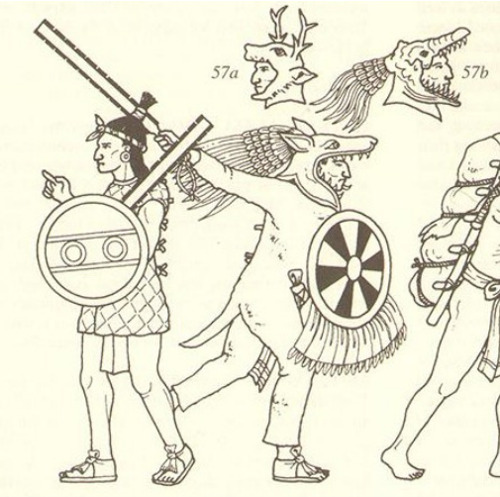
UNIQUE TECH
- Atlatl (Shared with the mexicas): Javelins +2 of damage and +1 range.
- Heron Banner: Symbol placed on the back to distinguish elite warriors. Tlaxcaltecan Warrior +20% hit points.
- Chimalli (Shared with the mexicas): Archers gains a shield; this provides +1 pierce armor.
- Defense Of Tlaxcallan: Outpost are upgrade to frontier out post, have more hit points and shoots one additional arrow and can trains spearmen and archers.
THE CHIMU KINGDOM
After the fall of Wari empire, numerous kingdoms rise in order to domain the Andine territory, one of the most important was the Chimu Kingdom.
They were great goldsmiths and perhaps even one of the best metallurgists on the continent, such is their importance that much of what would later characterize the Incas come from this town and from the Tiahuanaco.
Their road system was complemented by maritime trade routes that they navigated in the “totora reed horses” in addition to the fact that they seem to have been the main merchants on the Pacific route, which connected them with the Mesoamericans, mainly the Mayans.
Their soldiers start to implement light bronze armor, and their cities have one fortified palace per family ruler, this structures were political and administrative centers, also forts.
The Flag: Well, I know a lot more of Mesoamerican peoples than southamerican cultures, but in my investigations I found this flag from Europa Universalis and make a comparation with their With their motifs on the looms, it seems to be something they would do, although I think more triangular and less square shapes would be more correct.
CIV BONUSES
- Can train llamas in the Fortified Palace.
- Takes 1 of gold per 10 of food gathered from farm animals.
- Canoes 20% cheaper and faster.
- Fortified Palace mechanic replaces the usual town centers.
UNIQUE BUILDINGS
Fortified Palace: Structure that replaces the town center and is limited to one per age. Trains llamas, hoots additional arrows, have more hit points and trains villagers 2% faster in age II, 10% in age III and 15% in age IV.
UNIQUE UNITS
- Noble Guard: Melee heavy unit with damage for adjacent units.
- Totora Reed Horses: Fishing boat and trade ship, cheap but weak.
-
Chimu Runner: Fast infantry with low hit points, deals additional damage against ranged units and siege units.
UNIQUE TECH
- Sea Bird Hunt: Docks generate food with time.
- Artificial Wetlands: Llamas have 30% more food.
THE MIXTEC
One of the most ancient cultures in Mesoamerica still exists in the fall of Tenochtitlan and in our days, despite their loss of the golden age. “The People Of The Clouds” worship the god of rain Dzahui instead of a solar god, fire god, or war god like other nearby civilizations. Their god was so important to them that they used to make masks that emulated his face. Some worshiped the Huehueteotl god of fire but it was not so preponderant, although they used to make braceros consecrated to him and they were quite common.
The situation of men and women was quite equitable, in the Mixtec and Zapotec conceptions the masculine and feminine roles were mutually complementary.
His relationship with water was something every day, many of his crafts were made of turquoise, they were covered with this material or painted with the same colors as some stone and clay objects.
The Flag: Maybe one of my favorites betwen the flags I made, the mask is a reference to Dzahui and the principal color is turquoise in order to represent the water. The black part is because their corporal paints usually use black and the withe part is a reference to some ceremonial clothes.
CIV BONUSES
- Starts with 2 houses already built.
- A representation that they have been developing for millennia is that all resource harvesting technologies are obtained for free in age II.
UNIQUE BUILDING
Nopal Plantation: Mixtec’s take prickly pears from the nopales and infect some on purpose with cochineal because they get red pigment from them, which is highly coveted and can be bought at a good price.
Produces food 20% slower than normal farms (don’t replace this) and also produces gold.
UNIQUE UNITS
- Oracular Priest: Replaces the usual priest but can attack and have an active ability with a cooldown of 18s: Can choose units in a small area, that units receive more damage from allies for 4s.
- Deer Archer: Archer that can hunt and takes food from animals 30% faster, also have 30% more HP, and is 15% faster than a normal archer.
UNIQUE TECH
- Atlatl (Yes, this is common for Mesoamerican peoples): Javelins +2 of damage and +1 range.
- Ceremony Of Huehueteotl: Torch throwing and fire arrows deals 40% more damaga to buildings.
THE ZAPOTEC
People formed 5,000 years ago, starting to build cities in the end of the preclassical age, together with the Mixtecs they still exist after the fall of Tenochtitlan.
Called for the Nahua “People Of Zapote” rise and fall many times in their history. Many ignore that they made their own astronomical calendar apart from the Mayan and Mexica called Iza, in addition to ball game courts is one of the forerunners in it. Their epigraphic scripture was ancient and survived in codex of deer skin and some stones in Oaxaca. As I mention the role of women in society was in pair with the men in the mayor of cases, inclusive they take a part in politics.
In the war fear was their weapon, religious leaders and war priest wears the skin of flayed captive victims, including the faces as a mask.
About The Flag: This is apparently an official flag and I find in official and unofficial sites but never see an explanation of what it means or why they use it, maybe the references are very infrequent.
CIV BONUSES
- Farms are 40% cheaper.
- Units nearby temples deals +2 damage.
- Javelin throwers +20% HP.
UNIQUE UNITS
- Zapotec Priest: Replaces the priest, can fight and nearby enemies deals less damage.
- Zapotec Drummer: This unit can select a song, every song inflicts a different debuff to nearby units.
-
Chinantec Spearmen: Not fully Zapotec but fight with them or the Mixtecs against other enemies. Replaces the spearmen and their melee attacks have range, bud had less armor than normal spearmen.
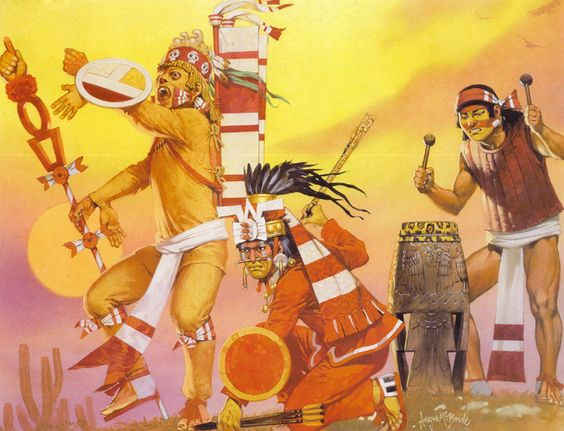
UNIQUE TECH
- Atlatl: Javelins +2 of damage and +1 range.
- Staggered Farms: Farms are worked 2% faster for every adjacent farm for a maximum of 16%.
-
Hybrid Fighting: Axeman Shoots a dart every 5 seconds.
Chinantec: The Chinantec lived in the actual state of Oxaca, like the majority of Zapotecs and Mixtecs, so they could be a shared unit. Moctezuma II also had some of their spears in their personal armory but this maybe was more for symbolic purposes and no for practice, the Mexica usually demand some products they did not produce as a tribute.
Finally, to say goodbye to my speculations in America, I wanted to make my own version of a Mexica flag, I did not discredit the one that is already around the forums, but I thought that it could be even more successful with the symbols.
The Sun still be a central element but using other symbol, the Nahui Ollin represents the cosmovision of the Nahua people and the age of the fifth sun (Also Huitzilopochtli is associated with the sun and can be their symbol too, this is important because he was a central god and who end the Aztecs to rise Tenochtitlan), the center symbol in superposition represents Ometeotl, the duality father/mother of the cosmos, the duality in the balance of complementary elements is very important in Mesoamerican religions and is extrapolated in every part of their life’s. The red is for the blood, that essence they give to maintain the gods alive and the green are the feathers of Quetzalcoatl, creator of humanity, and god of civilization.
My Previous Post Of America
-
Mexica: The Mexica Empire Speculation
-
Purepecha: The Purepecha Empire Speculation
-
Maya: The Mayan Speculation
